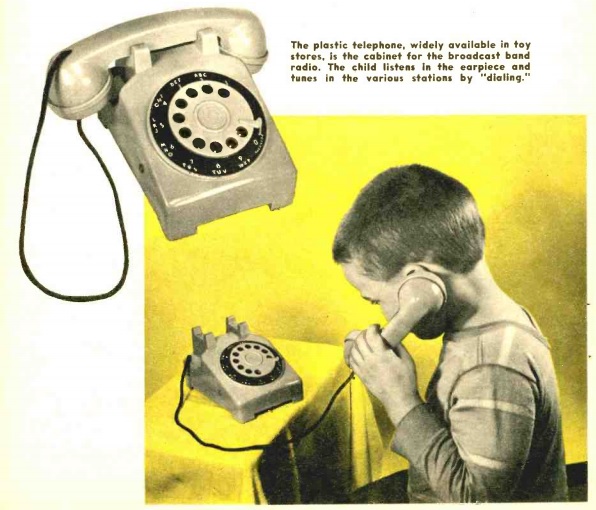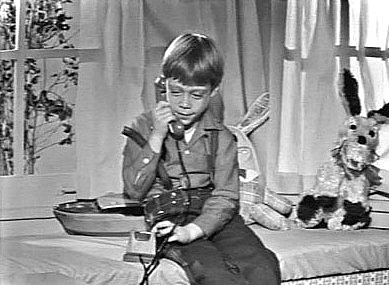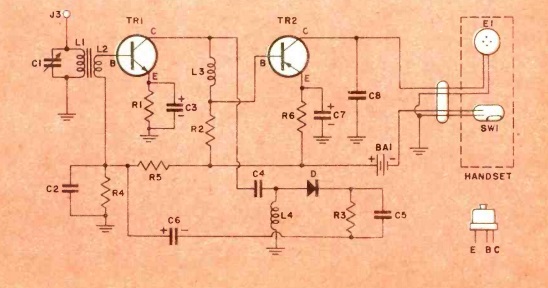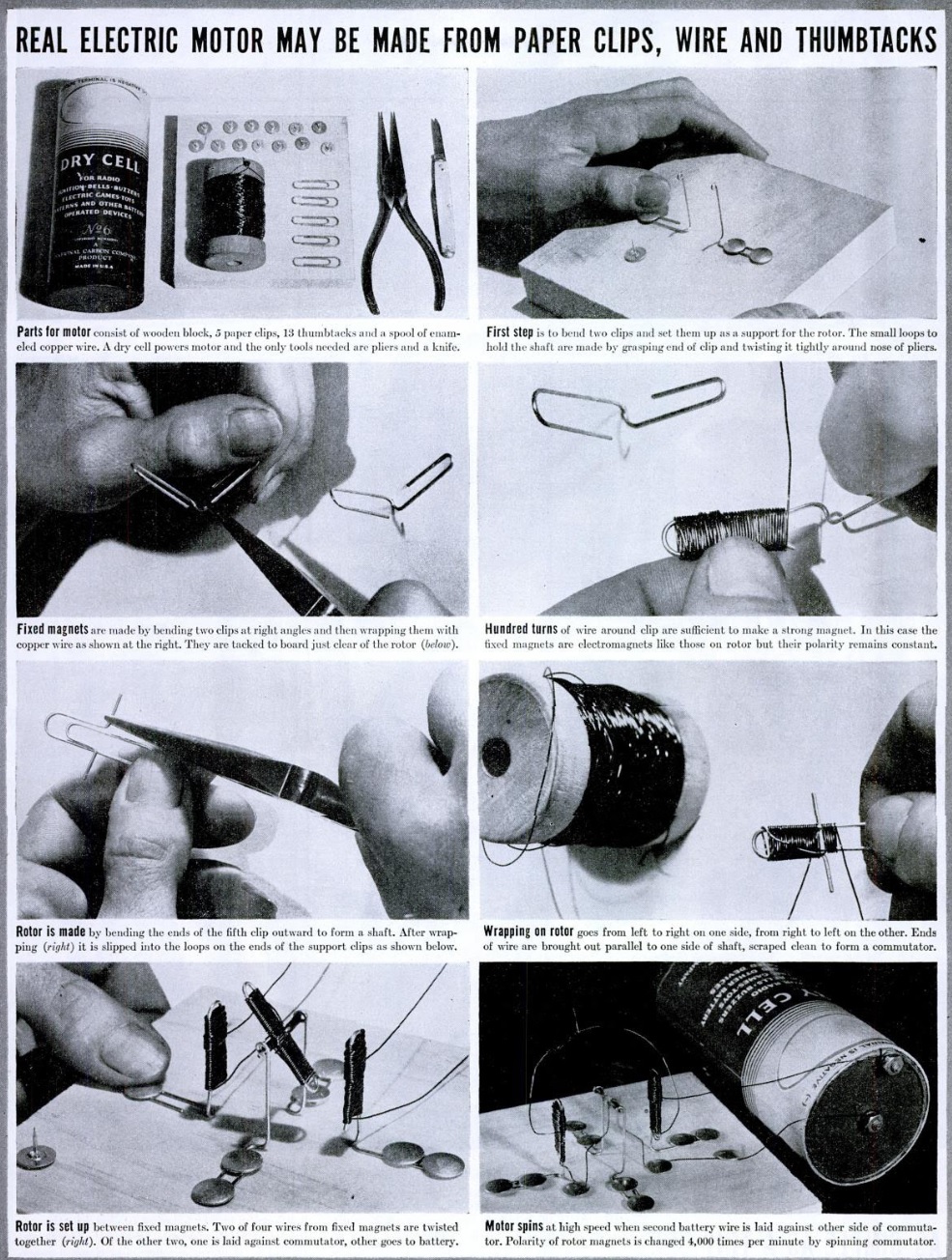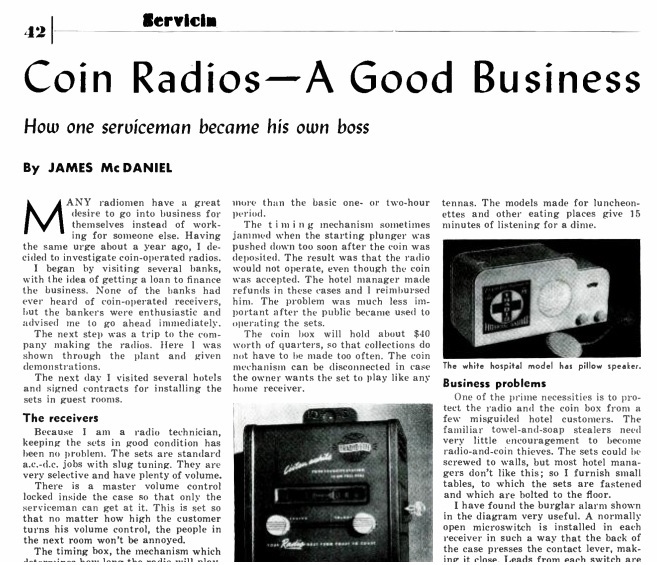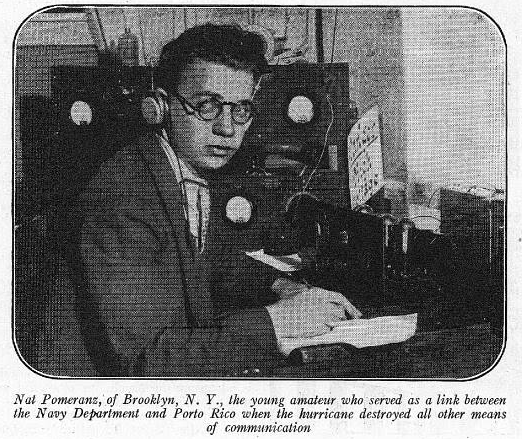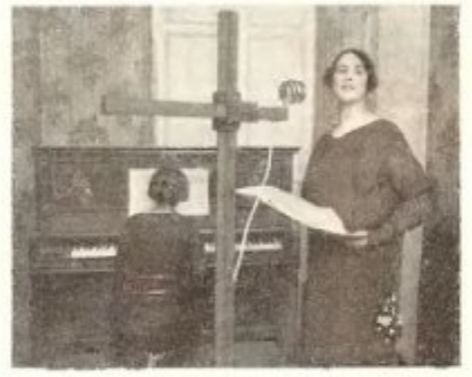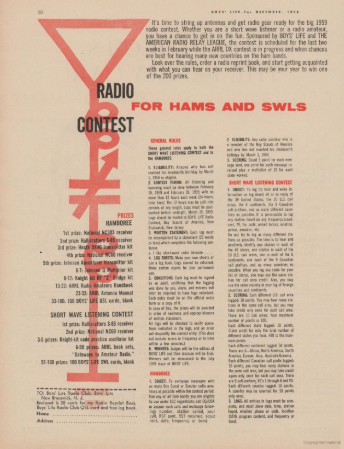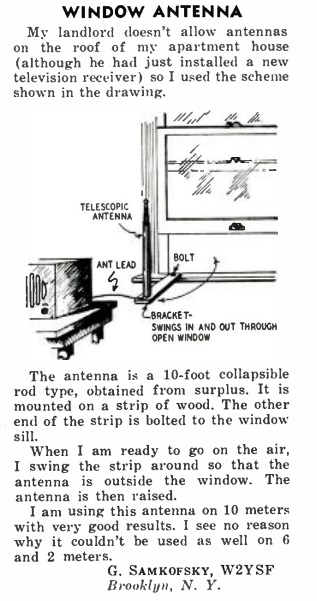 Seventy years ago, W2YSF’s landlord didn’t allow an antenna on the roof of the ham’s Brooklyn apartment building, so improvisation was necessary.
Seventy years ago, W2YSF’s landlord didn’t allow an antenna on the roof of the ham’s Brooklyn apartment building, so improvisation was necessary.
He finally settled upon the design shown here for his 10 meter rig. A telescoping antenna was mounted to a wooden bracket bolted to the window sill. When it was time to get on the air, he swung the antenna outside and extended it.
The author notes that the same system should work well for 6 or 2 meters.
The design is shown in the December 1948 issue of Radio Electronics.

